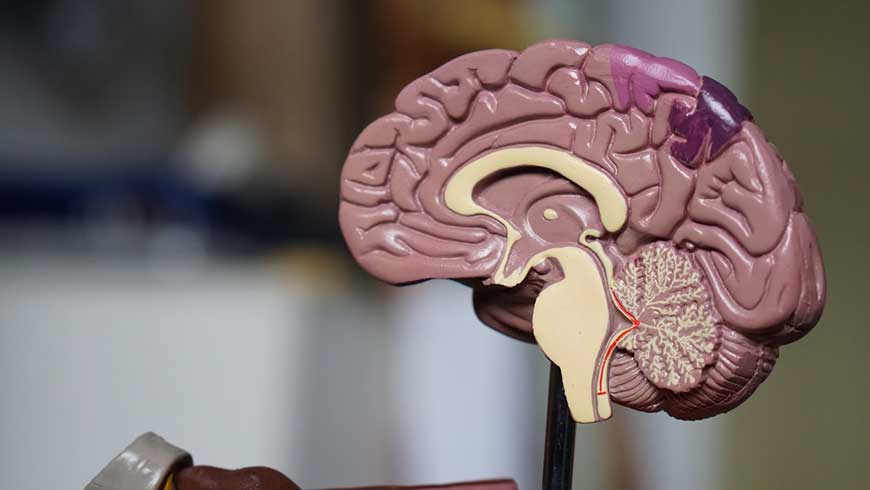
Overview
Alzheimer’s disease is a progressive disorder. It causes brain cells to degenerate and eventually die. Alzheimer’s disease is the leading cause of dementia which is a steady decline in behavioral and social skills as well as thinking. Dementia affects a person’s ability to independently function.
Early signs of Alzheimer’s include forgetting recent conversations or events. As Alzheimer’s disease progresses, the person suffering from it will lose the ability to carry out daily tasks as they develop severe memory impairment.
Current medications used for Alzheimer’s disease treatment can slow the rate of decline or improve symptoms. These treatments may help people with Alzheimer’s disease maximize function and retain independence for a time.
Symptoms
The key symptom of Alzheimer’s disease is memory loss. An early sign of the disease is difficulty remembering recent conversations or events. As this disease progresses, other symptoms develop and memory impairment worsens.
Changes in the brain associated with Alzheimer’s disease lead to increasing trouble with:
Memory
Memory loss from Alzheimer’s persists and worsens and eventually affects the ability of someone to function independently at work or home.
People with Alzheimer’s may:
- Get lost in familiar places
- Have trouble finding the right words to express thoughts, identify objects, or take part in conversations
- Routinely misplace possessions and put them in strange locations
- Repeat questions and statements over and over
- Forgetting conversations, events, and appointments, and not remembering them
- Have trouble finding the right words to express thoughts, identify objects, or take part in conversations
- Forgetting the names of everyday objects or family members.
Thinking and reasoning
Alzheimer’s disease may cause difficulty in thinking and concentrating. This especially occurs with abstract concepts such as numbers.
Multitasking is especially hard, and it can be a challenge to manage finances, pay bills on time, and balance checkbooks. These struggles may progress to an inability to deal with and recognize numbers.
Making judgments and decisions
There will be a decline in the ability to make reasonable judgements and decisions in every day situations. For example, they may wear clothes that are inappropriate for the weather, or make uncharacteristic choices in social interactions. It can be difficult to respond effectively to normal daily problems such as unexpected driving circumstances or food burning on the stove.
Planning and performing familiar tasks
Routine activities that take sequential steps such as playing a game or planning and cooking a meal become a struggle as the disease progresses. People with advanced Alzheimer’s might forget how to perform tasks like bathing or dressing.
Changes in personality and behavior
Changes in the brain due to Alzheimer’s disease can affect behaviors and moods. These issues may include:
- Social withdrawal
- Depression
- Loss of inhibitions
- Mood swings
- Apathy
- Changes in sleeping habits
- Loss of inhibitions
- Wandering
- Distrust in others
- Delusions
Preserved skills
Even while symptoms worsen, many important skills remain intact. These skills may include telling stories and reminiscing, dancing, listening to music, reading or listening to books, doing crafts or drawing.
These skills might be preserved for longer as they’re controlled by parts of the brain that are affected later in the course of the disease.
Diagnosis
The main component of diagnostic assessment is self-reporting about your symptoms, as well as information that can be provided regarding the symptoms and impact on daily life. A diagnosis of Alzheimer’s disease will also be based on doctor administered tests of thinking and memory skills.
You may also undergo laboratory and imaging tests to rule out other potential causes, or can help the doctor better determine what disease is the cause of dementia.
Tests
The following tests are often included when diagnosing Alzheimer’s disease:
Physical and neurological exam
Your doctor will do a physical exam and assess overall brain health by testing the following:
- Coordination
- Muscle tone and strength
- Reflexes
- Balance
- Ability to get up from a chair and walk across a room
- Sense of sight and hearing
Lab tests
Blood tests can also help your doctor to rule out other causes for memory loss and confusion such as vitamin deficiencies or a thyroid disorder.
Mental status and neuropsychological testing
Your doctor might conduct a mental status test, or a set of tests that are more extensive to assess memory and your other thinking skills. There are longer forms of neuropsychological testing that provide additional details about mental function in comparison with people at the same age and education level. These tests are also critical to establish a starting point from which to track symptom progression in the future.
Brain imaging
Brain images are now used to pinpoint visible abnormalities that can be related to conditions other than Alzheimer’s disease (such as tumors, strokes, or trauma) that can cause cognitive change. There are new imaging applications that may allow doctors to notice specific brain changes due to Alzheimer’s.
Imaging of brain structures include the following:
- Magnetic resonance imaging (MRI). MRI uses a strong magnetic field and radio waves to produce images of the brain in great detail. MRI scans are used mainly to rule out other conditions. They may show brain shrinkage, but this information doesn’t currently add significant value to making a diagnosis.
- Computerized tomography (CT). A CT scan is done using specialized X-ray technology. It produces cross-sectional images of your brain. It is currently used mostly to rule out tumors, head injuries, and strokes
Positron emission tomography provides imaging of disease processes. During a PET scan, low-level radioactive tracer gets injected into the blood to reveal a particular feature in the brain. PET imaging might include the following:
- Amyloid PET imaging can measure the burden of deposits of amyloid in the brain. This imaging is mostly used in research but if someone has very early onset dementia symptoms or unusual symptoms.
- Tau Pet imaging which is only used in research, measures the burden of neurofibrillary tangles in the brain.
- Fluorodeoxyglucose (FDG) PET scans show areas of the brain where nutrients are metabolized poorly. By identifying patterns of degeneration can aid in distinguishing between different types of dementia.
Treatment
Drugs
Currently available medications for Alzheimer’s disease treatment can help with memory symptoms and other cognitive changes for a time. Two kinds of drugs are used currently to treat cognitive symptoms:
- Cholinesterase inhibitors. These medications work to boost levels of cell-to-cell communication by preserving a chemical messenger that gets depleted in the brain by Alzheimer’s disease. The improvement is mild.
Cholinesterase inhibitors can also improve neuropsychiatric symptoms like depression or agitation. Aricept, Razadyne, and Exelon are commonly prescribed cholinesterase inhibitors. - Memantine (Namenda). This medication works in a different brain cell network of communication and slows down the progression of symptoms with severe to moderate Alzheimer’s disease. It is occasionally used in combination with cholinesterase inhibitors.
In some cases antidepressants or other medications might be prescribed to help control the behavioral symptoms that come with Alzheimer’s disease.
Creating a safe and supportive environment
A key part of Alzheimer’s disease treatment is adapting the living situation to the needs of the patient. For someone with Alzheimer’s, establishing and strengthening routine habits and decreasing tasks that are demanding in memory can make life much easier.
You can take the following steps to support the patient’s sense of well-being and their ability to function:
- Keep medications in a secure location and keep track of doses using a checklist.
- Carry a mobile phone with location tracking capabilities so that the caregiver can track its location. Include important numbers in the contacts of the phone.
- Keep wallets, keys, cell phones, and other valuables in the same place at home so they don’t get lost.
- Arrange for finances to come out from automatic withdrawal and set up automatic deposits.
- Use a whiteboard or calendar to track daily schedules and check off completed tasks.
- Ensure that slippers and shoes are both comfortable and provide good traction.
- Keep photographs and other meaningful objects displayed around the home.
- Install handrails in bathrooms and on stairways.
- Ensure that regular appointments occur on the same day and at the same time as much as possible.
- Remove clutter and excess furniture.
- Reduce the number of mirrors in the house, individuals with Alzheimer’s can find images in mirrors frightening and confusing.
- Ensure the patient has identification and wears a medical alert bracelet.
The information provided above about Alzheimer’s disease treatment is for informational purposes only and is not meant to replace a doctor’s advice. Always talk to your doctor about treatment for your medical concerns.


